Opening the second issue of publisher ARTtitude’s “Public Domain” art magazine is asking for a sensory overload of epic proportions. Vibrant colors shoot out alongside fascinating interviews and breathtaking illustrations in multiple styles. We learn about the art preferences, music tastes, and how creative passions intersect for some of BJJ’s standout practitioners. On the whole, it’s a book full of great art and insights from some of the most established figures in our sport.


But what is the correlation between BJJ and art that allows a mag like this to exist?? If you ask ARTtitude founder and BJJ brown belt Frederic Claquin, It’s BJJ’s status as a counterculture that opens that door. Counterculture, as defined by Merriam-Webster Dictionary, is a culture with values and properties that run counter to those of established society. With all the elements taken into account, is BJJ one such culture?
Well for a start we aren’t totally legal everywhere right now and most of our parents don’t get it. But more on that later.
“I think there’s a lot of crossover between combat cultures like BJJ and underground ones like skate culture,” Frederic said. Born and raised in France, Frederic has had a long career working in fields either currently or were at one point considered “underground.” Between time spent working with skating magazine “Thrasher” or in gaming industry with companies like MMORPG giant Blizzard Entertainment, Frederic became familiar with how these underground fandoms and hobbies can explode into the mainstream.
Finding BJJ in 2005, Frederic began training under five time European champion and sixth degree black belt Paulo Sergio Santos. During this time Frederic also helped found “Casa de Lapel” alongside Renaud Niard and Yume Kaneko. Stumbling into the blue belt blues in 2010 and remaining for a few years, Frederic has since returned like the prodigal son and even picked up his brown belt from Santos this year.

“I fell into jiu-jitsu the same way you can fall into surfing or WOW [World Of Warcraft],” Frederic said
Wanting to blend his passions, as many jiujiteros are apt to do, Frederic became involved with the European distribution of dvd’s for Pride FC as well as the one and only French issue of Gracie Magazine. A possible contributor to his hiatus, Frederic was disheartened at the lack of passion for media in the BJJ as well as the lack of infrastructure. Upon returning In 2017 however, the emergence of brands like Shoyoroll and others combined with the increased cohesion between BJJ and other forms of expression served as an inspiration.
“There were almost no bridges between the BJJ and the art or board sports scene. Fast forward now, references and bridges are everywhere. One practitioner out of two got tattoos, got a knowledge in comics, street art or pop culture in general,” Frederic said.
An active part of the art and board sports worlds, Frederic’s own art publication “ARTtitude” began in 2012 as a simple artbook publication for graphic designs like tattoos and board art. This small passion project has since grown into a global collective of 50 artist and athletes working with major videogame brands like Blizzard’s “Hearthstone” and combat sports apparel brands like Tatami Fightwear, Shoyoroll, Vital, Athom, and Vanguard Kimonos.


Public Domain, similarly, is a modest creation of Frederic with big ambitions. A newer publication on only its second issue, Public Domain is an art and lifestyle medium with a large place for BJJ in print as well as their new YouTube channel.
“…the best thing we can bring to BJJ is to treat it like a mainstream stuff, like something normal, like another sport, mixing it with other mainstream stuffs we like. Doing a regular/classic BJJ media does not elevate it, does not create bridges to other peoples, make other people, you can’t touch with a classic BJJ publication open it, to become curious about what it is,” Frederic said.
The second issue features art and interviews from the likes of Chris Haueter, Chris Noonan, Hywel Teague, Endhovian Ovo and others.
Along with a physical issue, Public Domain also exists as a website and YouTube channel where Frederic plans to experiment with new types of content.
“Not being a competitor myself and with so much of the media only about competition, I wanted to talk about BJJ in my way and what I liked.” Frederic said. The desire to connect with and provide a greater realm of content for the more artistic BJJ practitioner is still one of his great goals.
So back to the question I posed earlier, is BJJ a counter culture?
I have my own thoughts on the issue, but Frederic is fairly clear on his point of view.
“For me it still is. You look at all the people doing BJJ that are involved in other cultures like graphic design and skateboarding and the crossover is very evident,” Frederic said. “It’s about the lifestyle, it’s about commitment, it’s about the search for balance.”
A high barrier for entry combined with an almost nonexistent financial incentive is a good benchmark for whether a sport has conquered the zeitgeist. But aside from that, the social acceptability of trying to murder your friend with their coat is also a tough sell.
“The commitment in BJJ and those sports [skating and surfing] is similar,” Frederic said. “Fighting against someone or sparing is like juimping into a wave or triying to land a trick in skateboard. It needs commitment, it’s not ‘open’ to everyone like Tennis, Pink Pong or even soccer.”
Considering how terrified I’ve gotten every time I’ve stepped on a skateboard, I think it might even be a bit harder than going in on a single.
I do ultimately agree with Frederic, that the sport as it currently exists is outside the mainstream along with other misunderstood sports. But neither of us thinks that’s an entirely bad thing.
Existing on the fringes leads to a strong sense of unity, of building an us vs the world mindset that you may not otherwise experience. It puts less constraints on creativity by being out of the public eye, and you see the culture much more able to self-police to maintain standards. When Karate grew massive thanks to the movie boom, fake dojos run by charlatans popped up at a greater rate than could be controlled by legitimate practitioners in America. But if word gets out about a fake BJJ black belt anywhere, count on a few random dudes to descend onto that strip mall like a pack of blood hounds.
But what we see with outlets like Public Domain is that there are greater connections to be made and conversations to be had. The sport is unique in the people it draws to it, passionate and creative thinkers putting their skills against like minds in physical combat. There is beautiful art and insightful words being shared because of this culture we’re in, and it deserves it’s day in the sun.
We don’t know how long BJJ will remain this quirky little tribe of weirdos before that culture is lost to us. So let’s try to enjoy more of what we are before it’s gone.






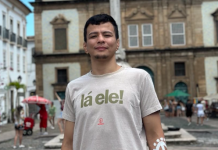
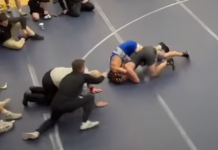
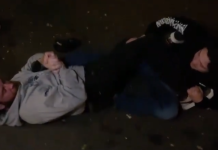

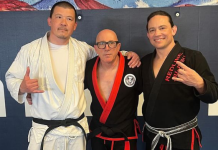
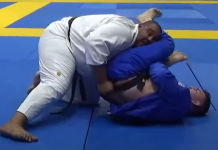


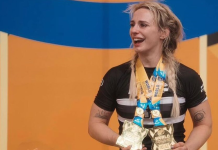
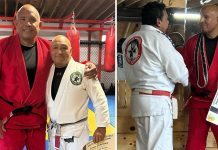
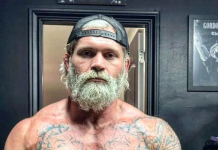






Going to pick up a copy of this to help support the “quirky little tribe of weirdos” while I still can!